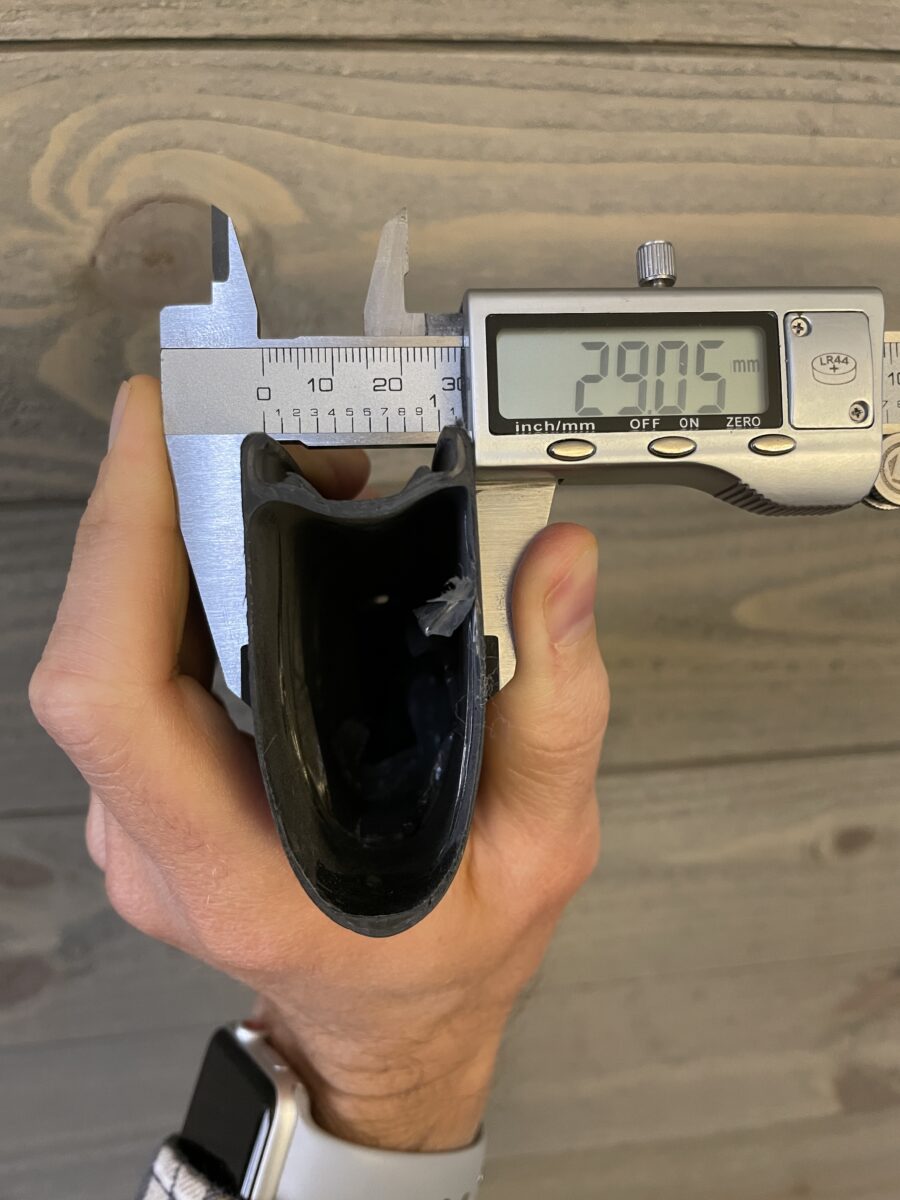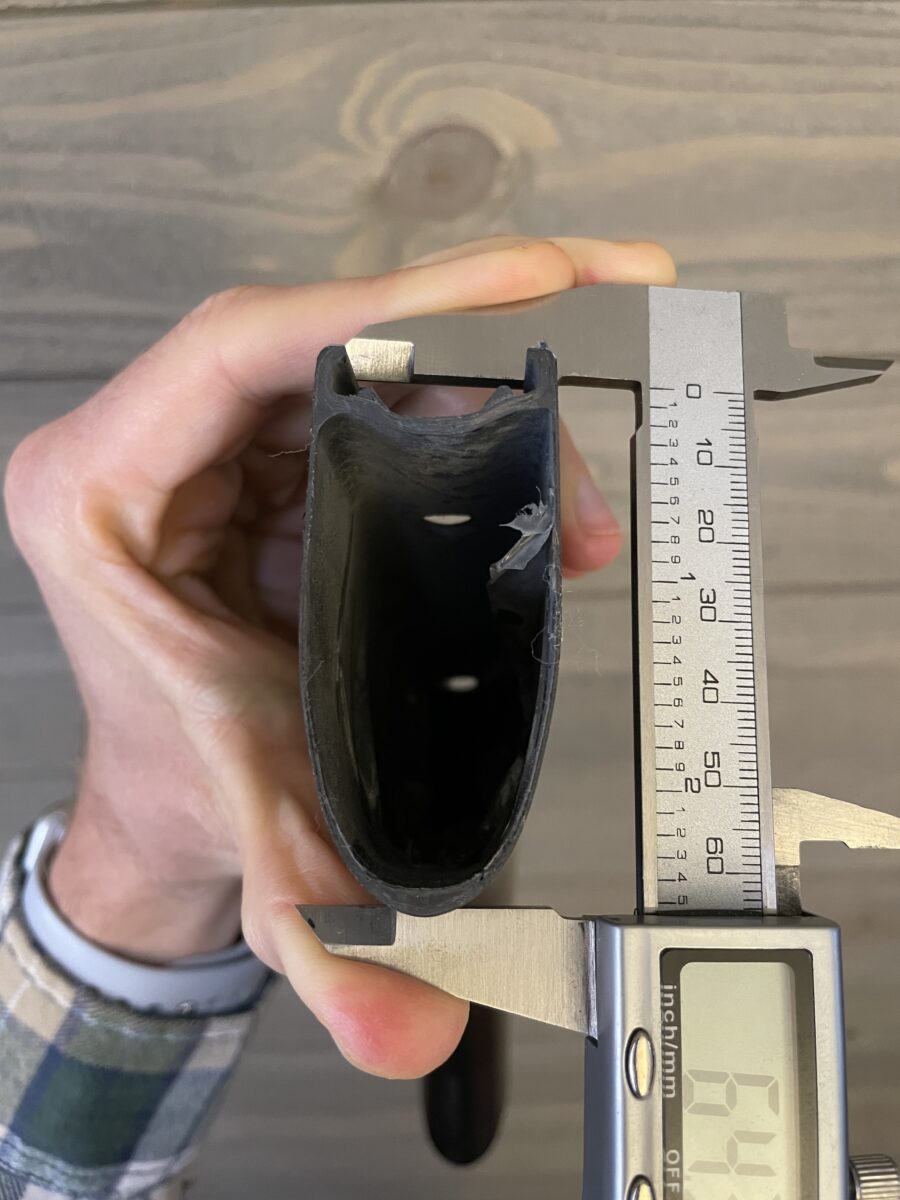For bike wheels, is deeper always faster?
Most people believe that a deeper cycling wheel automatically makes a faster cycling wheel. A deep section wheel is on almost every performance cyclist’s wish list. For years, we’ve stated that the fastest cycling wheels optimize both width and depth. Until recently, we haven’t been able to show an example where a shallower wheel with a wider rim profile is faster than a deeper wheel with a narrower profile. That is, until now. Meet the FLO 77 AS and the FLO G700.
If you’re a triathlete or road cyclist, the FLO 77 AS is faster than our 2016 FLO 90. The FLO G700 has a depth of 54mm which is faster than our fastest 77mm road wheel. Because of the width of gravel frames, we were able to design a very wide wheel. Let me walk you through the carbon wheels discoveries we made.
Being Limited By Width On Road/Triathlon Bikes
Road and triathlon bikes limit how wide we, wheel engineers, can make wheels. The main restrictions are:
- Fork and Rear Triangle Width and Tires. The widest frames made today accept 28mm tires. You may find the odd bike that accepts a 32mm tire but this is rare. This means most bikes will only accept 25mm tires. Older frames are often limited to 23mm tires. Since tire size is limited, we design wheels with an internal rim width small enough to make the wheel safe. We first focus on internal rim width which sets the external rim width. The largest internal rim width we can get away with for 23mm tires is 21mm. Then, so we are not adding extra carbon fiber or weight, we have a smaller external rim width. Our All Sport line is optimized around using 25-32mm tires with 28mm being the fastest.
- Accommodation. Older frames have really narrow forks, chainstays, and seat stays. So to be able to accommodate older and newer bikes, we are limited to specific rim widths (see above).
- Brakes. Rim brake wheels are restricted by how far calipers will open. The max is roughly 34mm for newer brakes. This again limits how wide we can make the external rim width. 28mm is as wide as we feel is comfortable to allow for proper brake actuation.

Gravel Bikes Are A Wheel Designer’s Dream
When gravel bikes hit the market, the forks, chainstays, and seat stays were designed to be wide to allow for large tires. This also allowed us to make really wide rims. Gravel bikes also used disc brakes which freed us to be able to make really wide wheels. Let’s discuss what we came up with.
Designing Wheels With Algorithms
At FLO, we design all of our wheels using algorithms. In 2015, we took over 100,000 on-road measurements to develop a weighted aerodynamic algorithm for rim shape optimization. In 2019, we developed an on-road testing protocol for measuring on-road rolling resistance. When combining these two data sets, we are able to produce very fast rims.
To develop rim shapes, the algorithm is given a set of constraints which include rim depth and external rim width. We also scan tires in 3D to add to our CFD models for optimizations.
Road Wheel Constraints
Our deepest and fastest disc brake road bike wheel is our FLO 77 AS Disc. The design constraints for this wheel’s width and depth were:
Max Width could be: 29mm
Depth Range could be: between 70-80mm
The optimization algorithm iterates through hundreds of rims shapes and settles on fast options. The best option resulted in the FLO 77 AS with the values below.
CFD modeling’s chosen width: 28.4mm
CFD modeling’s chosen depth: 76.6mm
The FLO 77 AS was designed around a 28mm Continental GP 5000 and has a 21mm internal rim width.
Gravel Wheel Constraints
The G700 is our 700c gravel wheel and was designed with the following constraints on wheel width and wheel depth. Broader width was possible due to the reduced limitations of gravel bike frames.
Max Width could be: 33.5mm
Depth Range could be: between 50-60mm
The optimization algorithm chose the following dimensions for the G700 as the fastest option.
CFD modeling’s chosen width: 33.0mm
CFD modeling’s chosen Depth: 54.9mm
First Look At Width And Depth
If you notice the numbers above, the range for each wheel allowed for a deeper wheel. Yet the CFD algorithm modeling did NOT select the deepest wheel as the fastest. The AS road line is the widest road/tri-wheel line we’ve ever made and the gravel line is the widest wheel we’ve ever made, period.
When we designed the 2016 FLO 45, 60, and 90, our wheels were much narrower. Each wheel was optimized to the top end of the depth range for speed. Today, the FLO 77 AS is the first road wheel that we’ve designed that did not optimize to the top of the range. This is because the wheel has so much width to iterate over, the deeper 90mm rim section is not faster than the 77mm rim section.
When looking at the G700 you can see that the fastest option resulted in shallower wheels below the max depth option parameter we entered into the CFD model. Again, the width was the key reason for this.

Proof In The Numbers
Let’s look at something interesting we noticed after our trip to the A2 Wind Tunnel in 2020. The old theory says a deeper wheel is faster. We measure a wheel’s efficiency in watts. We calculate the total number of watts consumed by wheels by adding the aerodynamic drag and rolling resistance. So the lower the number in the examples below is the faster the wheel.
Our fastest road wheel is 76.6mm deep and our fastest gravel wheel is 54.9mm deep. The only difference is the width. We tested 32mm tires with GP 5000s on both wheels. Here are the results.
FLO 77 AS Disc: 21.88W
FLO G700: 20.97W
You may be saying that we are looking at a large tire size on the FLO 77 AS Disc that the wheel was not designed for and that is unfair. Well, let’s look at the 28mm Continental GP 5000 on the FLO 77 AS Disc, which the wheel was designed with.
FLO 77 AS Disc: 21.38W
Further, you may be saying the G700 is using such a small tire compared to its 33mm width that the wheel is going to be faster. Let’s look at the FLO 77 AS Disc with 25mm Continental GP 5000s to give it all options to be faster than the G700.
FLO 77 AS Disc: 21.81W
In all cases, the FLO G700, at more than 20mm shallower, is faster than the FLO 77 AS Disc. You may think the FLO 77 AS is just a poorly designed wheel but it’s not. It’s faster than our FLO 90, which was arguably the fastest wheel of its time. The same goes for the FLO 77 AS Disc. These are fast, deep-section wheels but they are restricted by width due to most road and triathlon frame limitations. In the future when road bike and tri frames (possibly) get wider, we can make even faster wheels because these limitations will be removed. Until then, the AS 77 is super fast for road and tri disciplines.
Final Thoughts
To anyone making bike frames, please consider widening the fork, chainstays, and seat stays. There’s a lot of benefit for cyclists when it comes to wheel aerodynamics, rolling resistance, and tire selection. Even faster road bike wheels and triathlon wheels could be created if there were fewer frame limitations. If any frame manufacturers want to talk through our findings feel free to reach out to us. We’d be happy to help.
If you would like assistance in purchasing the best tire for your needs, let us know your questions. We are here to help.

Co-founder at FLO Cycling. Jon manages the day to day operations and acts as the lead engineer for all FLO products.
